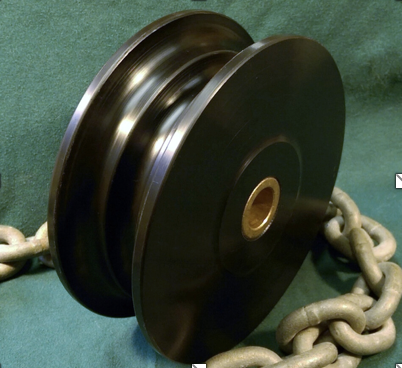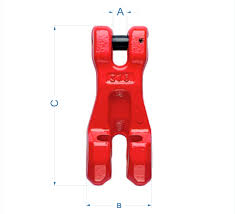High Latitude Cruising Yacht Anchoring - What Gets Forgotten
- Magnus Day
- Jul 11, 2023
- 10 min read
Updated: Sep 12, 2023
As our Vanguard's launch day approaches, I thought it would be interesting to navigate away from the usual updates and delve into something a little different.
We'll be guided by the expertise of none other than the renowned High Latitude Sailor & Ice Pilot, Magnus Day. So, ready your anchors and set your sails as we explore the nuances of shackles, anchor rollers, windlasses, and more!
So we've got ourselves an impressive anchor and a mighty piece of chain. What else is required Magnus?
Launch day is arriving but slowly. So rather than yet another update, why not change the tempo a bit?
Here we continue a series of articles from High Latitude Sailor & Ice Pilot Magnus Day. For a short Bio, please look to the end of this Blog. The ground tackle is in line for ordering, so I thought an incite on anchoring matters would be germane. I also added comments on how each issue is addressed (or not) in our Explorer Yacht, Vanguard.
Magnus Day, High Latitude Sailor and Ice Pilot
So we've got ourselves a magnificent anchor and a mighty piece of chain. What else is required Magnus?
Shackle
A large, high-quality shackle to connect the anchor to the chain. This should be seized with stout seizing wire, pinned with a split pin, or even welded closed. Bow shackles are best as they allow the chain to articulate as the boat swings.
Swivel
Swivels are only required if a vessel is likely to be left for extended periods at anchor where tide streams and wind change direction regularly. The idea that a chain will become strained by being twisted is false except in extreme circumstances. At best, swivels are an expensive waste of time and probably form the weakest link in your anchoring systems.
Let’s examine this more closely. 13mm chain has 27.7 links per meter. If you let out 40 meters of chain that’s 1100 links or so. If the vessel swings in a full circle it puts one twist (360°) in the 40m of chain or about one third of a degree per link. In most instances a boat will not spin around more than once in a 24 hour period so even if left for 10 days that’s still only 3 degrees per link.
Swivels add an additional point of failure for a dubious advantage, especially if the roller itself will help feed the chain as it rolls over. They also only like in-line loads, if you are going to fit one, put some chain between it and the anchor to keep other directional loads at bay.
Note:
Anchor chain is fed over a grooved roller that sets the orientation. No swivel fitted.
Anchor rollers
Chain runs on and off the boat over one or more anchor rollers. These should be of large diameter and cut with a groove to fit the vertically-oriented links as they pass over. This way the chain can’t twist between the windlass and the roller and the anchor will always come up the right way. It’s not expensive to have these machined to your specifications in Delrin (Acetal), ideally with a bronze sleeve for the pin to run through.
Note:
As fitted, Wayne from Mobius designed it. The central groove acts to orientate the chain.
Bitts/chain stoppers
We need a way to take the load off the windlass once we are anchored—not only to avoid damaging the windlass, but to allow us to service it or use its rope drum independently of the chainwheel.
My favourite method is shown below. The starboard side of the vertical post is in line with the axis of the chain. The chain is totally secure, lashed between the horizontal fingers. Remove the lashing and the chain can be kicked free to veer or recover. The fingers are slightly lower than the axis of the chain so the chain naturally runs over the fingers, protecting the deck.
There are plenty of other commercial products to achieve the same end, though some of them require the user’s finger to be too close to the chain for comfort. As a guy with one middle finger slightly shorter than the other, this speaks to me. Whatever option is chosen, it needs to be absolutely bomb proof.
Note:
Maxwell windlass is fitted with a chain stopper.
Windlasses
A windlass consists of an electric or hydraulic motor to pull in and sometimes pay out the chain, a shaft, a chain wheel (also known as a gypsy or wildcat that grips the chain), and usually some clutch. There is also a stripper that peels the chain off the chain wheel and sends it down the Hawse pipe into the chain locker. They can have a horizontal or vertical axis to the shaft, and there is often a rope drum to allow for the winching in of dock lines.
Power-wise, a windlass with a maximum pull of at least three times the weight of the entire ground tackle is recommended. Depending on their design, windlasses need to be positioned in such a way that the chain leads fairly onto the chain wheel and maintains contact for at least 180 degrees, ideally more. Shorelines need to lead onto the base of the rope drum at an angle of 8 degrees or so to avoid riding turns.
Note:
Vanguard is fitted with a commercial 3 phase Maxwell winch and windlass break. See earlier blog for positioning of the capstan height.
Anchor wash
Anchor chains spend their time settling in the filthiest, gloopiest mud imaginable. Inevitably some of that stays on the chain as you winch it back on board. The best defense is a powerful anchor wash. A fixed nozzle that sprays the chain from under the anchor roller is probably the easiest but on our own boat, we have a hose on deck that we direct at the chain as it comes up. A bit more effort but is equally more versatile as well. The key point is to fire as much water at the chain as possible under high pressure. We have an engine-driven bilge pump that also runs the chain wash.
Note:
We modified the fire main to provide a high-flow anchor chain wash at the forepeak. This also cleans and tests the fire pump on regular occasions.
Anchor well
The other thing that will help stop your decks from getting covered in stinky mud is to put the whole anchoring apparatus in a sunken well at the front of the foredeck with good drainage to contain any mud and dirty water from the chain. This can also be achieved with a dam or low wall around the anchoring area.
Note:
As designed.
Snubbers and chain claws
At its most basic, a snubber is an elastic rope to take the load off the chain and prevent snatch loading of the whole system. It’s a useful tactic in heavy weather, especially gusty winds. Use eight or twelve-strand plait nylon. Three strand is easier to obtain, but it’s prone to twisting around the chain under high load. Ensure it is protected from chafing with well-designed bollards, ideally without fair leads.
The snubber should be long, around 20m to allow for veering more chain as the wind increases without having to retrieve the claw and reset it. It should be fitted with a proper chain claw and not a simple chain hook which will tend to fall off the chain if the load comes off it.
Note:
Commercial 5.6 T SWL chain claw fitted to an 8-strand nylon snubber 20m long. The cheaper 3 strand tends to wrap around the chain when under load.
Anchor lock
The anchor needs to be locked or lashed in position when underway. It will get smashed around by head-seas, and even the slightest movement can produce an annoying clunk that will drive the crew slowly mad.
It needs to fit on the anchor roller securely, and then a mechanism to bring it home hard. Some folks choose a ratchet strap for this, but my preferred option is a bottle screw or a Highfield lever. On Baltazar, the chain is lashed into the bitts, and the anchor is secured with a bottle screw, which is lashed to the anchor chain to prevent it from loosening. Nothing ever moves.
Note:
Still in the works
Kellets
In somewhere north of 45 knots of wind, the catenary curve of most anchor chains diminishes to almost zero. This can work the anchor loose, especially if a short scope increases the pull angle from the anchor to the bow roller. Modern anchors are much better in this respect, and I have successfully anchored in severe hurricane conditions on several occasions.
To make the most of anchoring gear in strong conditions and/or to allow for a shortened scope in tight or crowded anchorages, we can use a heavy weight that slides down the anchor chain from the bow to help hold the chain down and maximize the catenary curve. This is called a kellet.
There are various models on the market but I’ve always found them to be a pain to use. Much easier and definitely more robust is to use a large shackle around the chain and lower it down on a length of line roughly as long as the depth of water. The bigger, the better. A 35 ton WLL shackle weighs about 24 kg and will do great to hold that chain down. Just be sure to practice fitting it and retrieving it in pleasant conditions before you do it in a blow!
Note:
I'd note here that Kellets have their limits. If weight at the bow allows, the weight could be better used in fitting a larger anchor with a higher holding capacity. Ultimately nothing is more effective than increasing the scope (max about 8:1) and/or a bigger anchor. For a good discussion, look at Peter Smith's excellent writeup on: https://www.petersmith.net.nz. Peter is the inventor of the Rocna anchor, and this is the design we have fitted to Vanguard.
Chain marking
It’s important to know how much chain you are letting out. Link counters are very effective and will run you upwards of a few hundred dollars. If you don’t fancy that, there are various other ways. Over the years, we have tried zip ties of varying color and number combinations, bits of colored rag, specially made plastic inserts, and painted bands. Of these, only painted bands are both highly visible and durable. We now paint a 2m colored band every 20m in the following order:
20m = Red, 40m = Yellow, 60m = Blue, 80m = White, 100m = Green, the supposed British Admiralty acronym being “Rub Your B**ls With Grease.” We also paint a 1m white band at the 10m marks between the colored bands and paint the last 5m fluorescent orange to warn us the chain is coming to an end. Old-fashioned gloss oil paint seems to last longest but is pretty messy.
Note:
In the works, the chain is 300M of 13mm G40, galvanized.
The bitter end
Clearly the non-anchor end of the chain needs to be attached to the boat or you risk losing it over the bow.. The usual advice is to secure the end to something stout next to or in the chain locker with a strong line long enough to reach out the hawse pipe and around the windlass so it can be cut on deck if you need to ditch the anchor and chain for some reason. The problem with this is if you do accidentally let out all the chain, it’s a real hassle to get it back around the chainwheel to retrieve it. For that reason we tie it short so the end of the chain cannot get up onto deck and live with the fact that if we want to cut it free we have to go below into the anchor locker to do so. The jury is out.
Note:
Secured within the chain locker.
Windlass position and chain locker design
There is an argument, particularly on sailboats for positioning the windlass at the aft end of the foredeck with the chain locker below it to centralize the weight. This has the added advantage of keeping the windlass out of most boarding seas and usually allowing for a deeper anchor locker that can store more chain with less need to flake. The windlass can even be kept more or less dry in a locker below deck if the chain runs through a pipe under the deck, but it must be carefully designed or it will interfere with foredeck hatches and other gear.
Regardless the locker needs to be easily accessible for chain flaking and for cleaning. It must be fitted with a pump that can deal with muddy water, bits of rock, seashells and the odd starfish that comes up with the chain. It is ideal if the chain can be unshackled from the anchor and dropped below deck and the hawse pipe capped for long passages at sea. Indeed some people like to unship the anchor and stow it below for long passages, but having fought an anchor on a rolly foredeck a few times trying to get it back on the bow on arrival, I’m no longer a fan of this.
Note:
The design is the same as Mobius, hull No 1. The chain locker is self-draining with a support grate to keep mud clear.
Kelp cutter
Sooner or later, the anchor chain will come up wrapped in a huge ball of kelp. I’ve seen these the size of cars, and I’m pretty sure I’ve been anchored to the kelp instead of the seabed on occasion. Obviously, they must be cut away, but this isn’t as easy as it sounds. Dangling off the bow and slashing away with a breadknife isn’t the most desirable way to spend the morning. The best kelp cutters I have used are made from a stainless tube with a blade welded on one end, similar to a garden hoe but more robust. The handle needs to be long enough to reach the waterline from a standing position on the bow. A decent weight will help with strength and chopping ability.
Note:
We can modify the 4 part carbon fiber ice pole/boat hook with a special end for this purpose.
Anchor alarms
Modern electronics can make anchoring far safer. We regularly set shallow and deep water alarms, a position alarm (GPS), and sometimes a radar guard zone alarm. The most user-friendly is an app called Anchor that we run on an iPad.
A robust anchoring system goes a long way to giving you peace of mind at sea or in an anchorage. Inspect your anchor while on passage to ensure nothing has come loose. Service your windlass and other gear regularly. And remember that alarms and electronics can help you rest a little easier, but nothing replaces a crew member on anchor watch when it’s blowing hard.
Note:
Covered in Time Zero Professional. Perimeter alarms for Anchor, Radar (if on), and AIS.
Bio - Magnus Day - www.highlatitudes.com
Magnus Day and Julia Prinselaar are commercially-qualified captains who specialize in off-piste destinations in high latitudes. They’ve logged well north of 200,000 sea miles, from 82°N to 67°S.
Magnus is best known for his seasons as captain of Skip Novak’s Pelagic and Pelagic Australis in Antarctica; he and Julia work as skipper and mate of ArcticEarth, an expedition sailing vessel operating between Greenland, the Canadian Arctic and the Gulf of Maine. They also consult with private owners seeking to sail to unique locations in the Arctic and Antarctic through High Latitudes.
Magnus and Julia are liveaboard cruisers sailing Baltazar, a French-designed Damien II and one of the first iterations of swing keel monohulls purpose-built for the icy Southern Ocean. Driven by a passion for wind and human-powered travel, they explore the backcountry by mountain bike and canoe whenever off-season travel allows. They are currently in New Zealand with Baltazar.

















